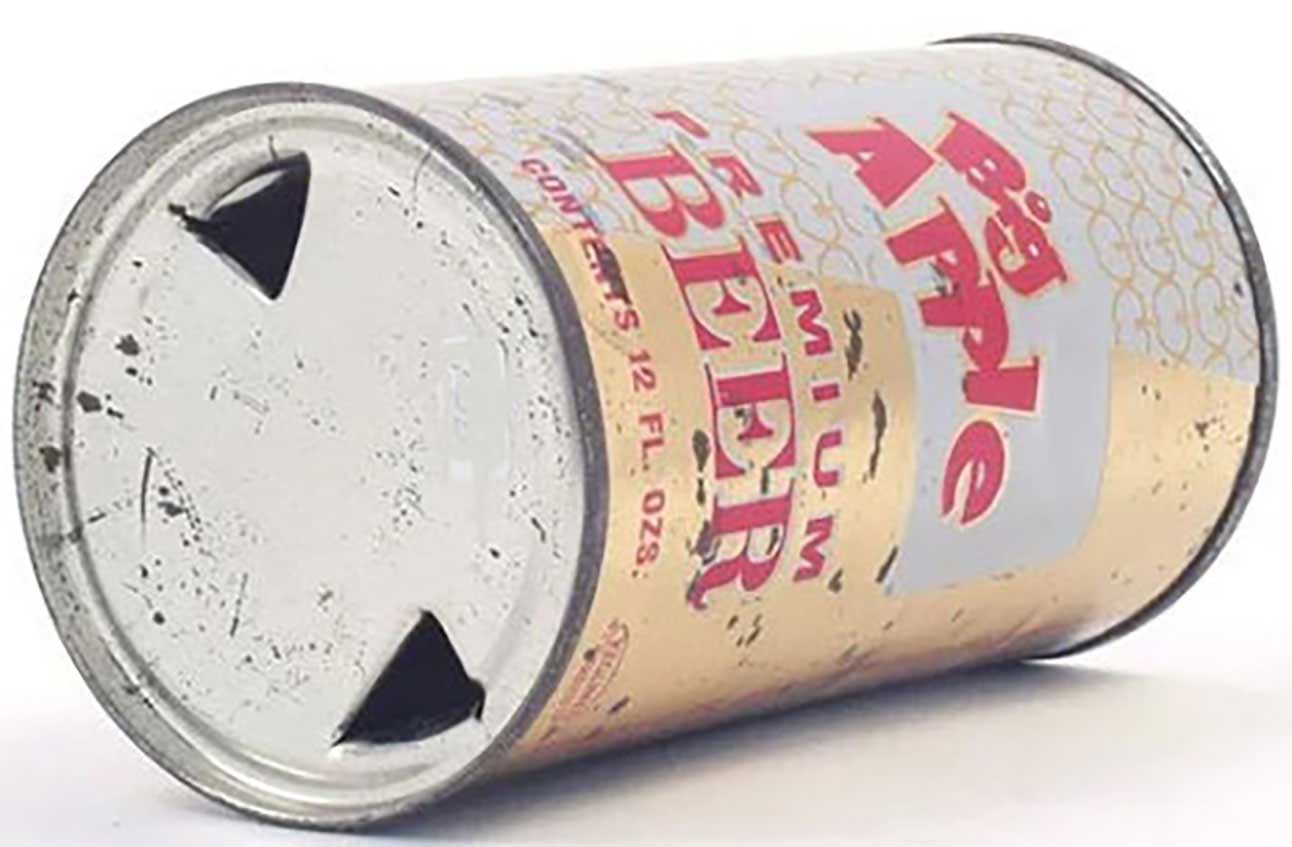August 2022
Michelle Knows Antiques
Raise a glass to collectible beer cans
by Michelle Staley
Here we are, inching toward the end of another summer. There are several items that are iconic Americana, such as apple pie, hot dogs, baseball, and beer. I have written about many topics over the years but have never touched on beer cans. They have an interesting history and some can be quite valuable, so let’s talk beer cans.
The “official” birthday of the beer can is Jan. 24, 1935. The first beer can style was the flat top. It looked like the beer cans on the market today with one exception — they were made of steel and weighed in at 4 ounces. The flat top beer can also brought about the creation of a hefty “church-key” to punch through the steel. The church-key, a collectible market in its own right, was 1/8” thick. Church keys were already being used, but they were not strong enough to get through the thick steel beer can tops.
Cone-top cans
Next up is the cone-top can. These came about in September 1935, with Schlitz being the first to use them. This type of can appealed to smaller breweries that didn’t have the money to revamp their bottle lines. The cone-top could be filled on the same machinery that was used to fill bottles and capped with bottle caps. The cone-top met its demise by 1960 as the big companies had already driven the smaller brewers out of business. There are four different styles of this particular beer can. You don’t see many cone-tops in shops or shows because they were used primarily by small breweries, so production was limited, Keep in mind, once the can was empty it usually went into the trash. Schlitz is the only big company known to have used the cone-top can.
Pull-top cans
In 1963, the beer can industry was forever changed when the Pittsburgh Brewing Co. introduced Iron City beer in “self-opening” cans. Schlitz placed the moniker “Pop Top” on the pull tab cans and by 1965, around 75% of all cans had pull tab tops. I remember that when I was about 11 almost everyone I knew had a pull top chain of varying lengths hanging in their bedroom.
Pull tabs turned out to be an environmental disaster. Animals ingested them, people were in the habit of popping the top and dropping it in their beer and then swallowed or choked on them, people would step on them and get a nasty cut, and as an amateur metal detector/treasure hunter, I still dig up those pull tops.

Big Apple steel flat top beer can
Big Apple steel flat top beer can, the first style of aluminum beer can, is priced at $225. (Image courtsey of the author)
Current stay tab style
Which brings us to what is so far the final stage in can opening, the stay tab style. They were introduced by the Falls City Brewing Co. in 1975. You would be hard pressed to find a canned beverage without a stay tab.
Tip: Turn the finger hole around so it is over the opening, and insert a straw. This is a great tip for people like me who apparently have a hole in their chin and dribble anything that will stain clothing.
Which type of beer cans have value? It is not just beer cans that might be worth money as other beverages were “bottled” in the different can styles. The primary consideration is overall condition. This includes fading of colors, rust, holes, and open or unopen. If a flat top can is opened from the bottom, this does not lower the value as the top is unblemished. Rarity also affects price.
The Big Apple can in the photo is priced at $225, whereas Budweiser or Schlitz flat tops will sell for about $20. Cone-top cans run from $200 to $1,000, and there might be some out there that have not been up for public sale and have a far greater value. I have seen a few pull top cans sell for $100, but most are in the $25 or less range.
Please be cautious if researching your vintage cans on the popular online auction site as those prices lean a bit toward the ridiculous side. Get those metal detectors out and see what cans you can find.
I always welcome ideas on topics that interest you and pictures of items that you would like to have appraised.
*All prices given are for sale in a private sale, antique shop, or other resale outlets. Price is also dependent upon the geographic area in which you are selling. Auction value, selling to a dealer or pawn shop prices are about ½ or less of resale value.
Michelle Staley is a Lenexa, KS-based dealer and researcher with 35 years of experience in the antique trade.
Send questions with photos to Michelle at michelle@discovervintage.com or TXSmichelle@gmail.com. Please keep queries to one question; questions without photos of the item may not be answered. There is no guarantee that your question will be answered or published.
Michelle is also available for consulting and extensive research work beyond this column. If you would like an appraisal on an antique or collectible please go to www.michellesantiqueappraisals.com for a one-on-one appraisal. Please note new web address.

